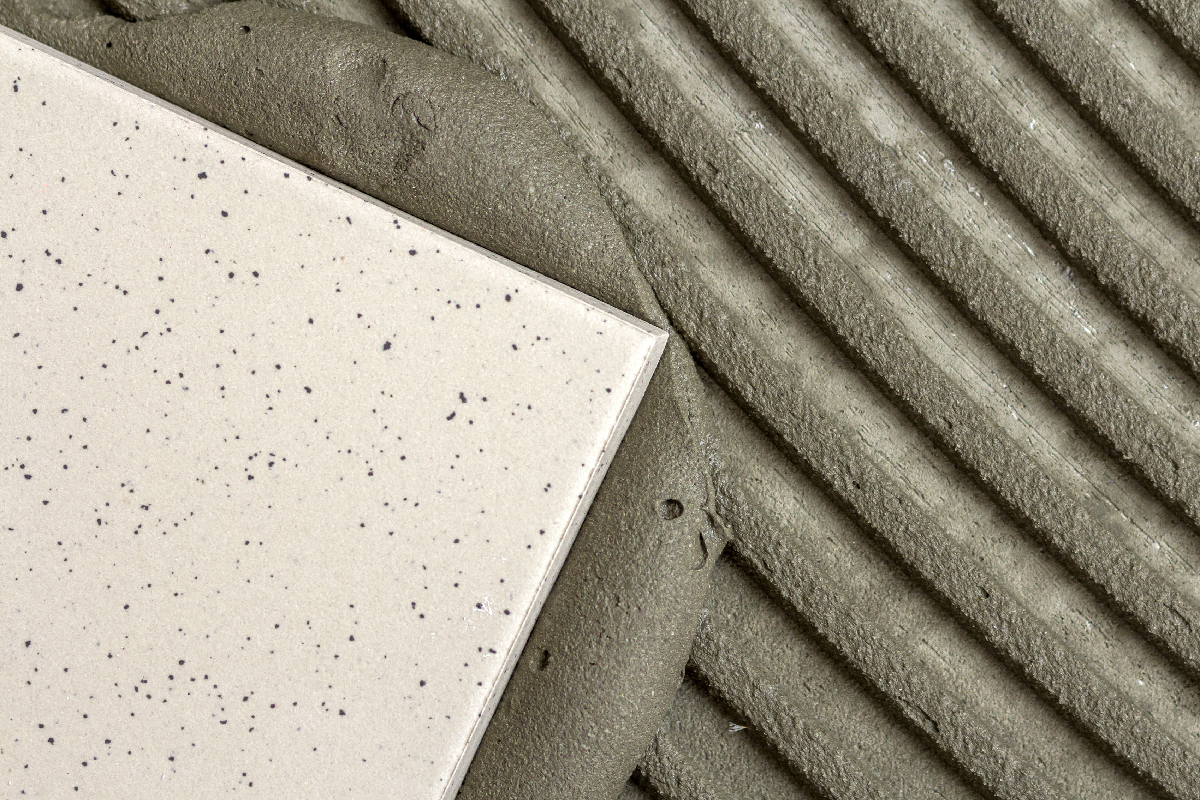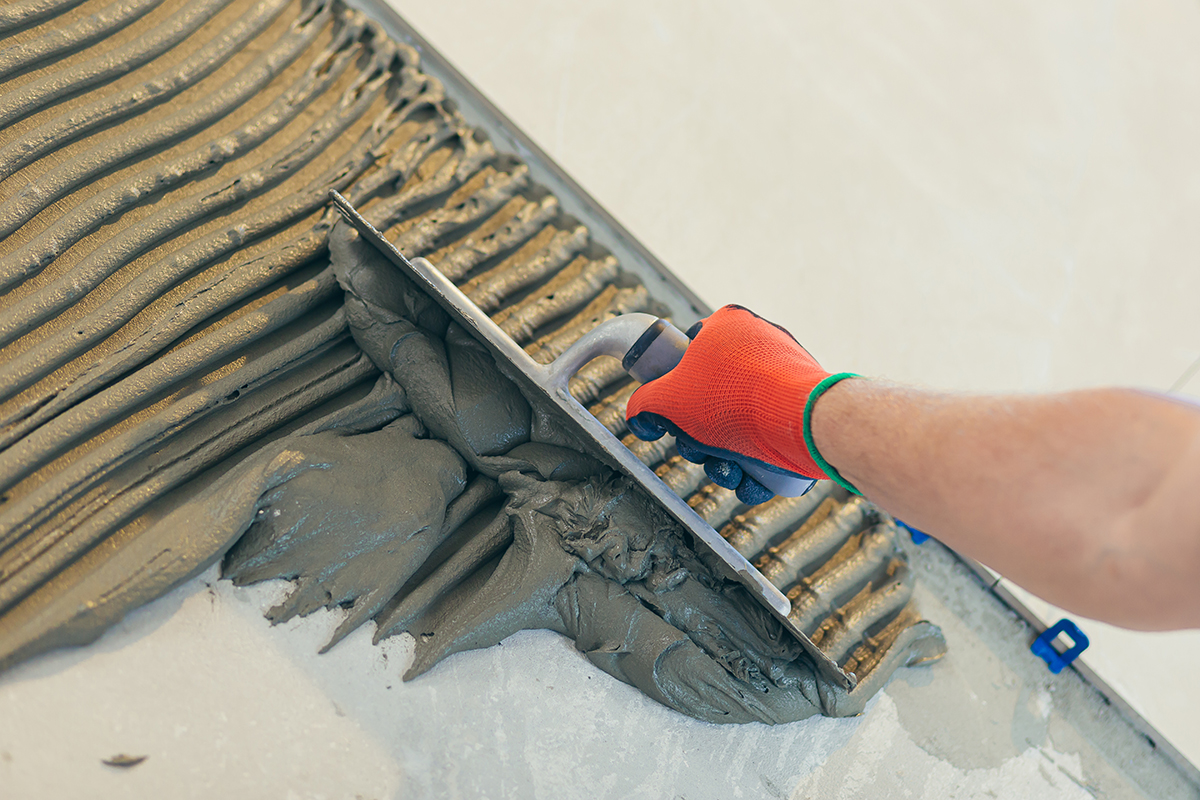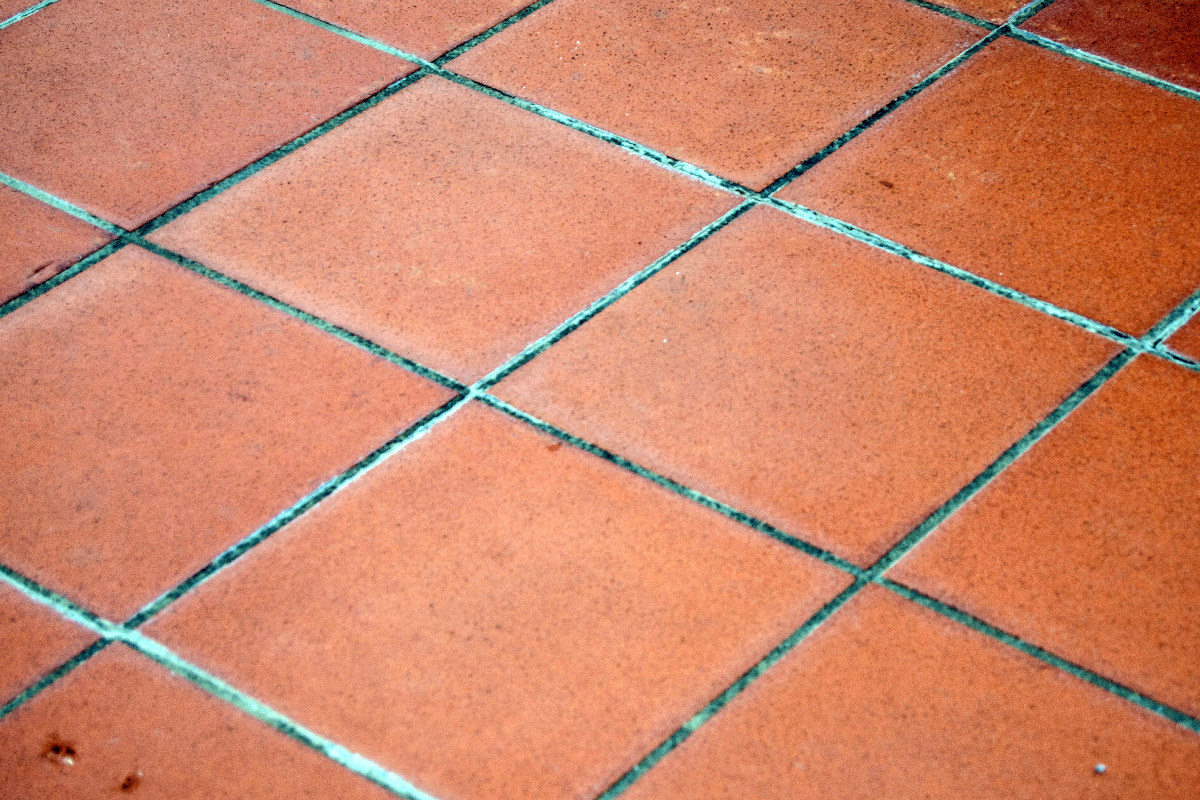If you are considering re-tiling your kitchen or bathroom, you've probably come across things like tile adhesive or grout. Generally, you use both materials to keep tiles in place. However, people also ask if tile adhesive can replace the use of grout.
Well, we've done some research and have the answers for you!
Taking its purpose from its name, tile adhesive is what you should use to stick the tile on the wall or the floor. This compound will adhere tiles to the surface to keep it in place.
Grout, on the other hand, fills in the gaps between the laid-out tiles. Because of this, you cannot interchange tile adhesive and grout during tile installation.
Knowing which materials you should use for your re-tiling project is essential. This post will discuss the types of tile adhesives and grout you can use on tiles. We'll also discuss what happens to your tiles if you don't apply grout, so keep reading and enjoy this post!

Can You Use Tile Adhesive As Grout?
Re-designing a kitchen or a bathroom will often require many changes to the space. This will include getting new fixtures, but one of the most noticeable jobs is re-tiling the entire area.
Changing the tiles of a space can be a tedious task, but it's something that a lot of home DIY-ers enjoy this job.

We may include affiliate links and curated AI content to highlight top design styles.
First-timers who want to try laying out tiles may find some things overwhelming. You'll have to work with many different materials, and knowing all about them can be a little confusing.
Two of the most common materials you'll hear about are tile adhesive and grout, but aren't they the same thing?
Well, to answer the question quickly, tile adhesive is not the same as grout. Of course, these two materials have similar properties and ingredients, but they have different uses for tiling.
Generally speaking, both tile adhesive and grout are types of mortar. Both keep tiles in place during installation, but their consistency is very different because of their purposes.
Tile adhesive is a type of tile mortar with a very sticky consistency. This stickiness allows the tile to adhere well to the surface you will be tiling on. Grout, on the other hand, is less sticky.
Its sole purpose is to fill in the gaps and joints left when the tiles are laid on the surface. Generally, grout is used to finish and clean up the tiling project.
Are There Different Types Of Tile Adhesives And Grout?
Although they are pretty similar, these two materials also have different types that you can use for other tiles.
Tile adhesives have different types available to use depending on the kind of tile you'll be using. There are also other types of grout that you should use depending on the purpose and use of the tiles.
Types Of Tile Adhesive

Thin-set Mortar
Check out this thin-set mortar on Amazon.
This type of mortar is the most common type of tile adhesive. Typically, you will find thin-set mortar in powder-based form, but you can also get them pre-mixed.
Thin-set mortar also comes in different kinds. You'll find polymer-fortified thin-set mortar or unfortified thin-set mortar that needs liquid latex during mixing.
Thin-set mortar will bond well with a lot of surfaces and kinds of tiles. It is also one of the most durable tile adhesives because it is mold, moisture, and heat resistant.
This mortar will apply well on wet and dry rooms, so this is one of the preferred tile adhesives by most professionals.
Tile Mastic
Check out this tile mastic on Amazon.
Tile mastic is a pre-mixed adhesive compound that is fast-setting and dries quickly. Generally, this type of tile adhesive is very sticky, thanks to the water-based acrylic glue mixed into the compound.
Typically, tile mastic is best for tiling dry places like wainscots, walls, or dry backsplashes. This material does not work for wet rooms and areas with too much moisture.
Since this tile adhesive sets very fast, it is best to use it on vertical applications like walls so that the tiles won't sag while setting.
Epoxy Mortar
This type of tile adhesive is the strongest in the market and is typically used in industrial applications. Epoxy mortar comes with a powder, hardener, and resin.
Due to the content of these materials, only professionals use epoxy mortar because it requires special training for proper application.
One of the best qualities of epoxy mortar is its quick-setting formulation and the impenetrable bond it creates between the tile and the subfloor.
This type of mortar is best to use in areas that experience heavy foot traffic because it won't move the tile despite the constant movement.
Types Of Grout

Sanded Grout
Grab this sanded grout on Amazon.
Taking one of the grout's components from its name, sanded grout contains grains of sand that help it bond to the tile properly. The fine sand makes the grout durable and prevents cracking between the tiles.
Sanded grout is generally used for tiles with gaps measuring 1/8 of an inch or wider. The texture of this grout is gritty, so this is typically seen on floor tiles.
Unsanded Grout
See this unsanded grout on Amazon.
Unsanded grout does not contain sand, but some very fine mineral particles allow the grout to fill in the tile gaps. This type of grout is typically used on wall tiles and is very easy to use.
This type of grout is best for tiles that have narrow seams, usually about 1/6 to 1/8 of an inch. This grout should not be used in tiles with wide spaces because it tends to crack and lose its hold very quickly if misused.
Epoxy Grout
Check out this epoxy grout on Amazon.
Like the epoxy tile adhesive, epoxy grout is very strong and sturdy. It also uses resin, so only professionals should use this type of grout.
This grout is best used in industrial areas because it is resistant to moisture, heat, and chemicals. It also bonds well with different kinds of tiles, even fragile ones, including glass, ceramic, and porcelain tiles.
What Happens If You Don't Grout Tiles?

While there are many ways to lay down tile, grout is one of the things that you should never forget on a tiling project.
Some may argue that if you butt the tiles together, there will be no joints or gaps. However, the truth is with tiles being separate, individual pieces, there will always be spaces in between.
Grout does take a lot of time, and it does involve meticulous work. However, grouting your tiles will make them last longer because it will prevent them from breaking or loosening their adhesive hold.
They will seal all the joints and gaps so that nothing will get into these spaces and cause the tile to break.
Also, not all tiles are identical and accurately sized. They may not look like it, but even the best tile installation will likely have spaces between them.
With the right kind and color of the grout, you can hide these spaces and make the surface look flawless. Tiles also move, so this is one thing that you should remember if you're planning not to grout your tiles.
Regardless of whatever surface it is, tiles will move.
If tiles do not have grout, they will loosen their hold even if you closely stick them together. Without something holding their joints in place, they will most likely loosen up and chip or break.
To Finish Up
The right setting and finishing material for your tiles are essential to make them last longer. Just make sure to use the right tile adhesive on the kind of tiles that you will be installing.
Don't forget to use the proper grout to prevent moisture from seeping in and loosening the tiles. With these in mind, your tiling project will surely last for years.
Made it to the end? Check out these helpful related articles:








